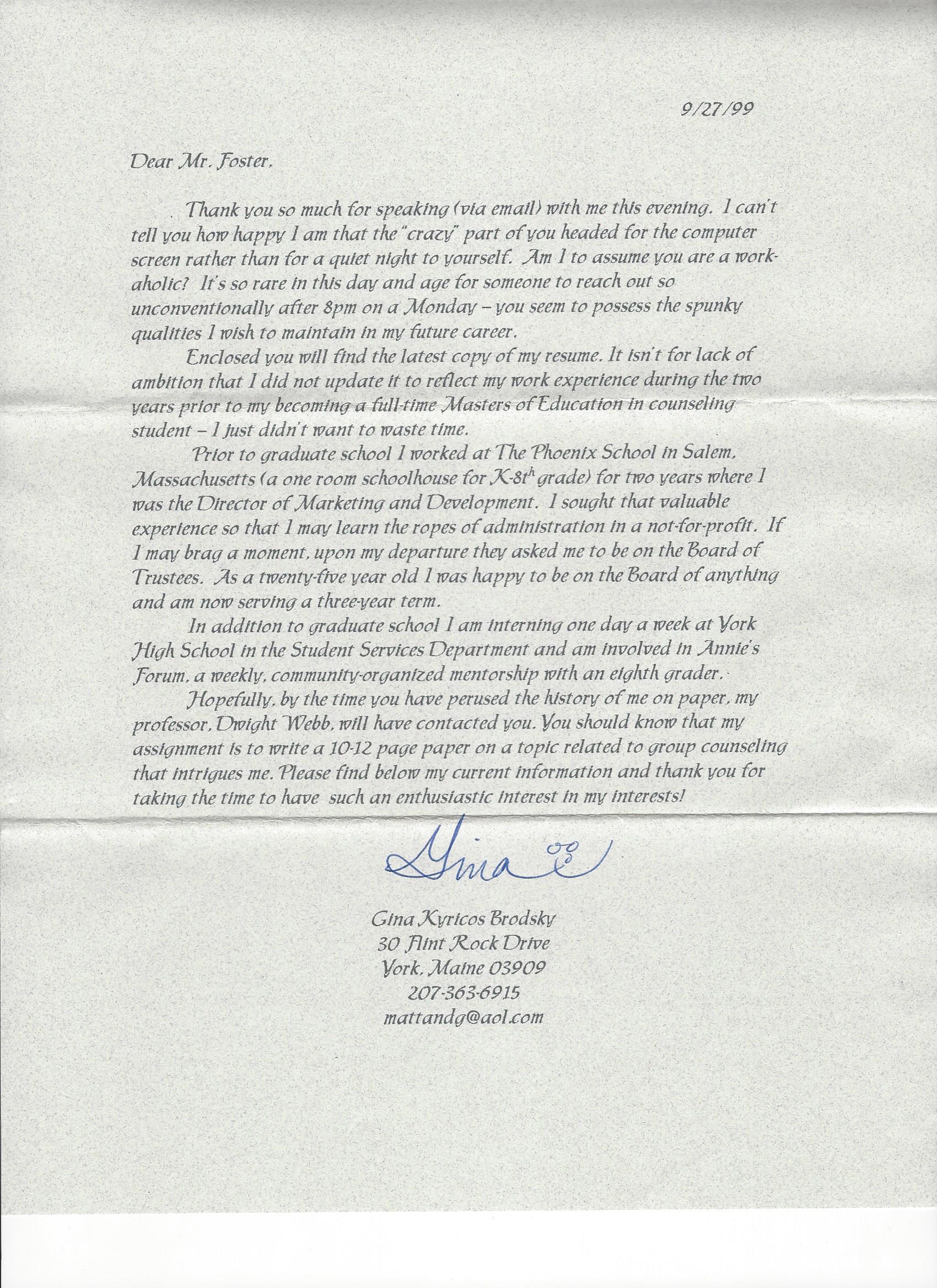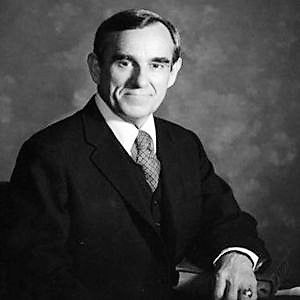
Multiple Family Group Therapy (MFGT)
The Hidden Method
As seen through the eyes of a counseling intern.
©1999 by Gina Kyricos Brodsky
Introduction
There is a quietness that comes
in the awareness of presenting names
And recalling places
In the history of persons who come seeking help.
Confusion and direction are a part of the process
Where in trying to sort out tracks that parallel into life
A person's past is traveled.
Counseling is a complex riddle
Where the mind's lines are joined
With scrambling and precision
To make sense out of nonsense,
A tedious process
Like piercing fragments of a puzzle together
Until a picture is formed.
(Gladding, 1978, pg. 148)
Counseling, without a doubt is a journey. A journey for the therapist, a journey for the client. Each day provides a window into the self for the helper and the seeker. Today, with the evolution of information obtained by giants such as Freud, Skinner, Bowlby, Erickson, Rogers, Adler and Pearls (just to name a few) we have become a society filled with counseling opportunities for all walks of life. You do not have to be an artist to reap the benefits of art therapy, a musician to savor the serenity of music therapy, a child to enjoy the therapeutic benefits of the extra-curricular in play therapy. You just have to be willing to transform your desire to make changes into personal growth.
However, for today's families, it seems to be increasingly difficult to treat one member without treating them all. An individual member may obtain the desire but be unable to continue growth without the support of the other members of his nucleus, his family. George H. Orvin, father of Adolescent Multiple Family Group Therapy, states that the most recuperative force in the treatment of dysfunctional children is the bosom of that child's family (interview with Lewis N. Foster, 1994). For that reason, many therapists begin their initial sessions with the construction of a family tree. After all, without understanding the roots it is nearly impossible to treat a branch.

George H. Orvin, MD
Marriage and Family Therapy made its strong mark in the United States in the late 1920's with Abraham and Hanna Stone's establishment of the first marriage and family-counseling center in New York City. However, it wasn't until almost twenty years later that theorist, Nathan Ackerman, played a crucial role in focusing the efforts of psychoanalysis on family units. Before Ackerman, psychoanalysts purposely excluded family members from the treatment of individual client for fear that family involvement would be disruptive (Sexton, 1994, p. 250).
Clearly, without understanding of those who affect and how they affect treatment seems not only difficult but possibly inconclusive. Therefore, the need and benefits of family therapy seem clear and well founded.
Group Counseling
Groups provide a natural laboratory that demonstrates to people that they are not alone and that there is hope for creating a different life. (Corey & Corey, 1997, pg. 5)
Group counseling seems to have made its mark in the late sixties and early seventies. encounter groups and personal-growth groups made self-work and growth appealing to many. Previously, during World War II, due to a shortage of therapists adequately trained for individual consultation, therapists were forced to monopolize their efforts and work with several clients suffering from similar problems. It's no wonder that practitioners began to realize that groups provided a wonderfully unique setting with a multitude of benefits for both the counselor and the client (Corey & Corey, 1997,pg. 11).
Group work in the nineties has reflected a resurgence of interest in the process. After all, no one likes to feel alone in his or her unhappiness. Perhaps, for this reason, group work has provided a basis for human connection in many different settings.
The stages of a group, as indicated by Corey & Corey, seem to mirror that of which friendship formation evolves. The initial stage is a time of orientation and exploration. Norms are established, personal and group goals are set, and members are becoming acquainted. The transition stage consists of that of a testing ground where feelings of anxiety, defensiveness, and resistance are displayed. Like in friendships, one assesses that of the others' limits and capabilities. Finally, the working stage is where an environment of safety and trust have been established and work, whether it be personal or group can begin. It is no wonder that group work seems quite attractive to many different types of people in a number of diverse settings.
It is not uncommon to find groups available not only in mental health agencies but also in corporate establishments such as AT&T and Hewlett Packard. It seems that CEOs alike are coming to the same conclusions that psychotherapists such as Frances Vaughan have come to:
The overall quality of one's relationships depends on how willing one is to be open, accepting, and loving rather than fearful, covert, and defensive. (Class Notes, 1999)
Group therapy seems to be a medium in which patients feel that they won't have "to go it" alone. There are still others involved. It's less intimidating than a one on one experience with a therapist. Perhaps, that is why group therapy seems to have always enjoyed success with willing participants since its conception.
The Combination: Multiple Family Group Therapy
How does the family: play, share joy, treat fear, express anger, solve problems, make decisions, handle honesty, experience love, understand hate, manage conflict, experience grief, deal with anxiety, perceive intimacy, relate to each other, deal with frustration, maintain self-esteem, deal with and handle hate, set limits and consequences, understand and share emotions, deal with stress (rigid or flexible), move through the family life cycle, move from one activity to another, and adapt to addiction and codependency, manage the parenting, marital and other roles, relate to other families, individuals and institutions, consider themselves as a family and as individuals in family.
- Lewis N. Foster (MFGT Homepage Link, 1999)
Dr. H. Peter Laqueur, known as the Father of Multiple Family Group Therapy, was working at a large hospital in the New York City area as the director of a department for the clinical treatment of schizophrenic patients between the ages of twelve and fifty-two. It was 1951, and every Sunday parents, brothers, sisters, uncles, aunts and other family members came to visit their loved ones. During these Sundays, Dr. Laqueur would meet with these family members, each in his turn, so that he could keep them updated on the aspects and treatments of the disease and produce and cultivate feelings of hope.
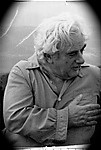
H. Peter Laqueur, MD
After some time, Dr. Laqueur felt that although it was taboo, it would be beneficial for patients and their family members to join for a two and a half hour session to discuss the sickness, treatment methods, problems during patients' stay in hospital and future challenges when patients return home. This evolved into groups of four or five families meeting for weekly sessions.
"We perceived that sometimes the so-called 'healthy' members of the families were almost as sick as the patients themselves, the main difference being that the patients had been the first ones to be sent to the hospital. To prevent the frequent return of our patients o the hospital after having gone home, it became necessary to treat their families as well as them." --H. Peter Laqueur
(Dr. Laqueur speaking at the Catholic University of Leuvern in 1977 and provided by Lewis N. foster, MFGT Resource Center, 1999)
After seventeen years of this work, Dr. Peter Laqueur discovered that the amount of re-admissions to the hospital were reduced by an astounding eighty (80) percent (MFGT Resource Center Homepage, Article #6, 1999).
By establishing a method of not only education but ongoing understand of families and their children, group members discovered what roles they played in the sickness, how to handle certain situations when they occur, and never lost sight of the fact that they were not alone. Thus, Dr. Laqueur found himself garnered with yet another title, The Father of Multiple Family Group Therapy (MFGT Resource Center Homepage, Article #6, 1999).
Thus began the Multiple Family Group Therapy phenomenon. As Lewis Foster, Director of the MFGT Resource Center has stated poignantly in an article titled, "It's Not Family Therapy. It's not Group Therapy. It is Multiple Family Group Therapy."
The Laqueur Model
Like an orchestra conductor, Peter generates a theme, joins and interacts family to family, assess situations, creates verbal and behavioral interventions, and therapeutically dances with the group. --Lewis N. Foster
(MFGT Resource Center Homepage, 1999)
A typical Multiple Family Group Therapy session with Dr. Laqueur began with each family introducing themselves and stating the reason(s) for their attendance. Following the introductions, Dr. Laqueur would observationally and sometimes physically link family members with similar roles and ask them to discuss why they wear "the hats" they wear and what their relationship is like with their family. By doing so, observers are able to discern where they fit in their families and why they think they may be effective or ineffective.
This was usually followed by behavioral exercises developed by Peter, his staff of trainees, and therapists before him. some of the more powerful and popular exercises include:
The Back-to-Back: Commonly used to display different communication techniques among individuals.
Example: Jane and John seem to be having trouble expressing their feelings to each other. The therapist asks that they stand in the center of the group back to back. The therapist indicates that this display seems to be the way they choose to communicate; by not looking at each other, hearing each other, or trying to compromise. Then, an MFGT leader asks if another couple(s) would like to show a communication technique other than that of Jane and John's. Other couples are directed to begin back to back. Some turn around at the same time to face each other while others display variations. thus promoting observational and emotional discussion involving different techniques, successes, and downfalls.
The Yes-No: Commonly used to display power-plays between individuals.
Example: Jane complains that Joe is always telling her what to do and discounting her feelings and aspirations. They are then asked by the group leader to stand in the center of the room with their hands on each other's shoulders. Jane is directed to say "yes" while pushing against Joe and Joe is asked to say "No" while pushing against Jane. Emotions generally rise and observers, including other families and the group leader(s) are able to analyze what is going on between them.
In an MFGT session videotaped on April 5, 1977, Dr. Laqueur successfully utilized the aforementioned exercises while working with a suicidal mother of four that had rarely spoken to her husband in a number of years. Earlier attempts to get the mother to talk in the group proved unsuccessful. Dr. Laqueur facilitated the changing of seats quite often in his sessions and thus asked her husband to trade seats with him so that he may sit next to his wife. Eventually, attempts at discussion were successful. by the end of the session, the mother had moved to a chair next to another previously suicidal mother and engaged in conversation, stood in the middle of the group with her husband and experienced the yes-no and back-to-back exercises, and listened to her children and husband tell her why they needed her in their lives. In front of and with approximately eight other families, the mother was able to recognize aspects of herself and her family that she had not previously seen (MFGT videotaped session with H. Peter Laqueur, 1977).
It is not surprising that families sometimes chose to continue attending MFGT sessions even after their patient has been discharged. Families found their experiences to be therapeutic not only when receiving group and leader feedback but in giving it as well.
Dr. Laqueur recognized and determined three stages of group development: Phase I entails the families experiencing and expressing feelings of grief in regards to their problem. Phase II involves a display of resistance to treatment as family members acknowledge their roles in the dysfunction. Finally, Phase III is when a willingness to make changes and work to support each other and other families occur.
For Dr. Laqueur, assessing the families occurred in the MFGT sessions. After extensive work with families, Peter developed nine structures of disturbed families, seven mechanisms of change with the MFGT, and six factors to assist in determining whether families can hold their own against environmental forces. (MFGT Resource Center Homepage, 1999) These proved very helpful in determining families' needs and are still used today (structures and factors can be found at the MFGT website under the H. Peter Laqueur Model).
MFGT Goals and Theoretical Assumptions
Models of Multiple Family Group Therapy have been developed to treat inpatient and outpatients struggling with different forms of addiction, mental health problems and perhaps, most significantly, in the management of schizophrenia. Multiple Family Group Therapy is usually conducted in residential treatment centers, community clinics and psychiatric hospitals.
"...MFGT is fun, exciting, challenging, emotional, paradoxical, intimate, and nurturing. It is less expensive than individual family therapy and less staff work with more families." --Lewis N. Foster, MFGT Resource Center Director
Nicholas A. Belsky, MSW, wrote an article in 1995 entitled, "A Model for Multiple Family Group Therapy In Adolescent Inpatient Treatment" in which he states the goals of MFGT to be: to help each family member deal with his/here reality; to improve communication between family members; to change how the family works; to help the therapist as a change agent by sharing the group leadership experience with peers (co-therapists), nursing staff, trainees and families.
Belsky further states that the theory behind MFGT is that the individual (adolescent) lives in the system (family) and the system maintains the symptoms of the individual and the family. The goal of treatment is to help the information flow freely within the family system to and from the outside world. The assumption being that families tend to perpetuate problem behaviors as a form of metaphoric communication about themselves in relation to the outside world (Belsky, MFGT Resource Center Homepage, 1995).
Corey & Corey believe that theoretically, multiple family groups can be considered in three ways: as composed of discrete family units; as two subgroups, one of adolescents and another of parents; or as a group of individuals. (Corey & Corey, 1997, pg. 342). all three ways occur simultaneously and develop throughout the life of the group. thus, the leader must be keenly aware of the different subgroups and their impact.
Different MFGT Uses and Models
Psychiatrist, George H. Orvin, known as The Father of Adolescent Multiple Family Group Therapy, has been treating adolescents in MFGT for over thirty years. In an interview with Lewis N. Foster, George stated that without assessing the roles and behaviors of the members of a child's family it is almost impossible to change maladaptive situations.
Dr. Orvin believes that in order to successfully treat a patient you must not only understand his/her world within the family but his/her world outside of the family. In this respect, he believes that Multiple Family Group Therapy provides the most successful medium to accomplish treatment.
Dr. William R. McFarlane, Chief of the Maine Medical Center Department of Psychiatry, and his assistant, Donna Downing, report great success with the use of Multiple Family Group Therapy in the treatment of schizophrenic patients. This model seeks to assist the patient and family in accommodating the disease while developing social support systems for the reduction of confusion, anxiety, and exhaustion in the patient's family, while they learn adaptive strategies (MFGT Resource Center Homepage, Article 4, 1999).
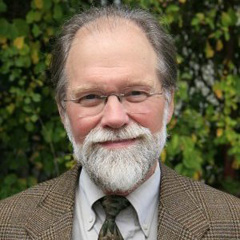
William R. McFarlane MD
Through a structured strategy, families are brought together for a very specific and effective psychoeducational process which involves meeting with a primary clinician for questions and answers, participating in a Survival Skills workshop where they learn about the disease, and then continuing with regular MFGT meetings.
Donna Downing strongly suggests that if one has never lead a multi-family group before, he or she should begin with families with schizophrenia. Dr. McFarlane has scientifically shown that this model is effective in preventing relapse (under 10% per year, 30% thereafter). To date, this model of MFGT is the most cost-effective psychosocial treatment for schizophrenia tested empirically to date. This research supports the findings of H. Peter Laqueur prior to his death in 1979.
Finally, Lewis N. Foster, Director of the Multiple Family Group Therapy Resource Center in Florence, South Carolina, who is largely responsible for helping to gather information for this paper, has developed a model of MFGT for uses with addiction and codependency. After learning that Dr. H. Peter Laqueur held his MFGT sessions on Sunday afternoons (time of the highest amounts of visits) he did the same.
Mr. Foster's stages mirror, with some differences, that of Peter Laqueur's phases of group evolution and are referred to as the social stage, the problem definition stage, the interaction stage and the closing stage. During so, the therapist pays attention to the process while the families provide the content. Foster believes that a successful MFG therapist promotes others in the field, continues to develop personally and professionally, fosters a balanced life, maintains a positive attitude, shares knowledge and experience with peers, and recognizes that ignorance comes in all degrees (Lewis Foster, MFGT Resource Center, 1991).
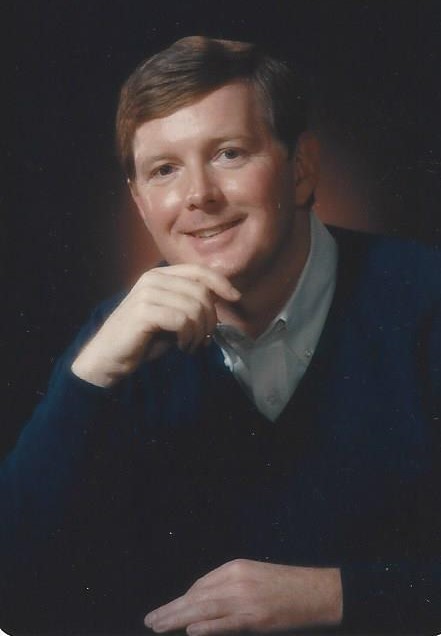
The Hidden Method
In researching this paper, I was struck by the lack of up-to-date, organized information on Multiple Family Group Therapy. For a method that was supposedly initiated almost fifty years ago it seems odd that there wasn't more information available. Thankfully, I stumbled across the Multiple Family Group Therapy Resource Center's Homepage and the assistance of its director, Lewis N. Foster, who seemed more than thrilled that a student in graduate school was interested in writing such a paper.
Although honored, I was limited to: viewing videotapes from the seventies of MFGT session with Dr. H. Perter Laqueur, tracking down email addresses for potential information sources that proved largely unfruitful, printing numerous articles via the internet from the only site that came up under Multiple Family Group Therapy, and conducting interviews with people who have limited knowledge of each other. Yet, even though Freud has passed on many years ago, I am able to obtain a list of practicing psychoanalysts in the United States if I so desire.
Perhaps the lack of information is due to the fact that the Father of Multiple Family Group Therapy, Dr. Laqueur, died unexpectedly in 1979 and was unable to publish a significant amount of work? Perhaps, in comparison with other theoretical approaches and models, MFGT is relatively young? Or perhaps, as Donna Downing stated in our interview, it comes down to funding the large amount of work it takes to begin multiple family groups in psychiatric hospitals and mental health agencies. It seems interesting that this is such a problem even considering that the Department of Mental Health has on record that the most effective treatment for schizophrenics and their families is managing medication and Multiple Family Group Therapy.
However, what we do know is that MFGT provides a unique opportunity for insights into four mediums: the patient and his family, the therapist, other families, and through other families, the outside society. These factors combined provide us with not only the widest range of understanding possible but also the highest chance of controlling the adverse effects of each medium. Only time will tell.
References
1. Corey, Marianne & Corey, Gerald. Groups: Process and Practice. Fifth Edition, Brooks Cole Publishing Company, 1997.
2. Gladding, S.T., Counseling: A Comprehensive Profession. Fourth Edition, New Jersey, Prentice Hall, 2000.
3. Gladding, S.T., (1979) A Restless Presence: Group Process as a Pilgrimage. School Counselor, American Counseling Association.
4. Foster, Lewis., (1994) An Interview with George H. Orvin, MD. The Father of Adolescent Multiple Family Group Therapy, Multiple Family Group Therapy Resource Center, Florence, South Carolina. (Videotape)
5. Laqueur, Peter. (1974 & 1977) Multiple Family Therapy Session with Peter Laqueur, MD> Multiple Family Group Therapy Resource Center, Florence, Sough Carolina. (Videotape)
6. Multiple Family Group Therapy Resource Center Homepage, Via American On-Line, 1999.
7. Sexton, T.L. (1994). Systematic thinking in a linear world: Issues in the application of Interactional Counseling. Journal of Counseling and Development.
Other sources involved in on-line chats with Lewis N. Foster, Director of the Multiple Family Group Therapy Resource Center in Florence, South Carolina and a one on one interview with Donna Downing, assistant to Dr. William McFarlane.
